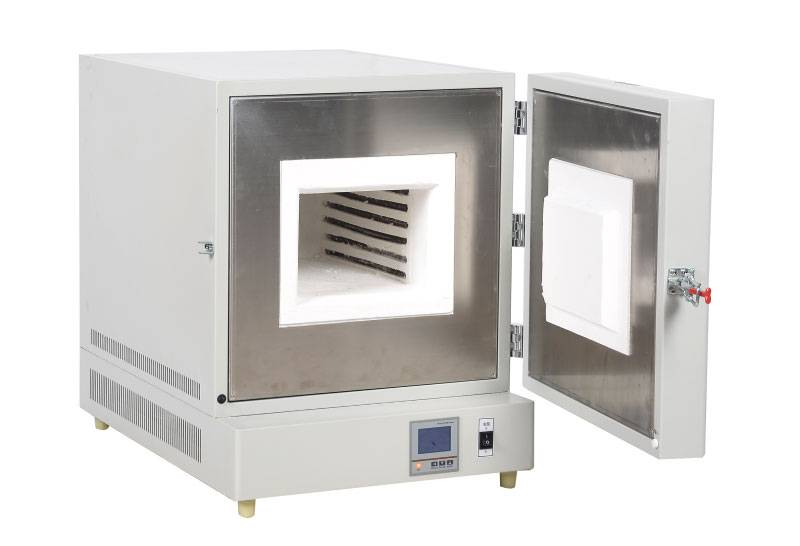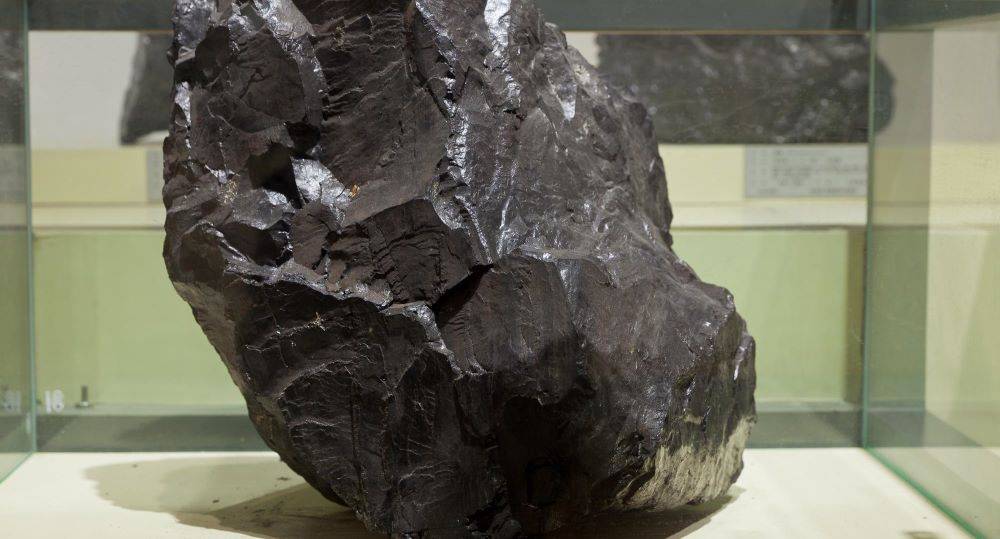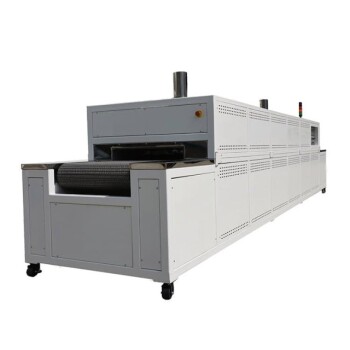Принципы и устройство муфельных печей
Типы муфельных печей
Муфельные печи в лабораториях бывают разных видов, каждый из которых отличается уникальным принципом нагрева и применением. Наиболее распространенные типы включают электрические, микроволновые и газовые муфельные печи, каждая из которых отвечает определенным потребностям научного сообщества.
Электрические муфельные печи высоко ценятся за их универсальность при выполнении таких задач, как формовка, плавление, сушка и нагрев материалов. В отличие от индукционных печей, в которых нагрев материалов осуществляется за счет электромагнитного поля, в электрических муфельных печах используются электронагреваемые огнеупорные элементы, помещенные в прочный металлический контейнер. Такая конструкция позволяет им работать при более высоких температурах и с большей плотностью мощности, что делает их пригодными для более сложных применений.
Высокотемпературные печи коробчатого типа представляют собой классический вариант муфельных печей, часто напоминающих по форме коробку. Эти печи обладают улучшенной теплоизоляцией и настраиваемыми размерами, обычно имеют квадратную конструкцию с открывающейся вперед дверью. Конструкция дверцы часто включает внутреннюю дверцу для лучшего сохранения тепла, что делает печи коробчатого типа популярным выбором во многих лабораториях.
Муфельные печи Thermolyne - еще один специализированный тип, особенно известный в промышленных настольных применениях. Эти печи могут достигать температуры до 1200°C, что делает их идеальными для высокотемпературных процессов в промышленности.
Зная о различных типах муфельных печей, исследователи и лаборатории могут выбрать наиболее подходящее оборудование для удовлетворения своих конкретных потребностей.

Механизмы нагрева
В муфельных печах используются различные механизмы нагрева для преобразования электрической энергии в тепловую. Наиболее распространенные типы включают электротермические и микроволновые муфельные печи, каждая из которых использует различные методы получения тепла.
Электротермические муфельные печи
Электротермические муфельные печи генерируют тепло за счет нагрев Джоуля процесс, при котором электрический ток проходит через проводник, вызывая его нагрев за счет сопротивления. Этот метод высокоэффективен и широко используется в лабораторных условиях для точного контроля температуры. Нагревательные элементы, обычно изготовленные из таких материалов, как нихром или кантал, рассчитаны на высокие температуры, что обеспечивает стабильное и надежное выделение тепла.
Муфельные микроволновые печи
В отличие от них, в микроволновых муфельных печах используются микроволны для преобразования электрической энергии в тепловую. Этот процесс включает в себя взаимодействие микроволн с материалом внутри печи, вызывая молекулярное перемешивание, что приводит к быстрому и равномерному нагреву. Преимущество этого метода заключается в способности быстро и равномерно нагревать материалы, что делает его особенно подходящим для приложений, требующих быстрой термической обработки.
Оба механизма нагрева обладают уникальными преимуществами, удовлетворяя различные промышленные и исследовательские потребности. Понимание этих принципов имеет решающее значение для выбора наиболее подходящей муфельной печи для конкретных задач.
Основные компоненты
Ключевые компоненты муфельных печей являются неотъемлемой частью их функциональности и эффективности. К ним относятся:
-
Нагревательные элементы: Они имеют решающее значение для создания необходимого тепла внутри печи. Они могут быть изготовлены из различных материалов, таких как карбид кремния или металлические сплавы, каждый из которых обладает уникальными свойствами, такими как долговечность и термостойкость.
-
Изоляционные материалы: Высококачественная изоляция необходима для поддержания внутренней температуры и предотвращения потерь тепла. К распространенным материалам относятся керамические волокна и огнеупорный кирпич, которые обеспечивают отличную теплоизоляцию и структурную поддержку.
-
Топочная камера: Это основная зона, в которой происходит процесс нагрева. Камера обычно изготавливается из высокотемпературных сплавов или керамики, чтобы выдерживать экстремальные условия и обеспечивать равномерный нагрев.
-
Системы контроля температуры: Передовые системы управления необходимы для точного регулирования температуры. Эти системы часто включают цифровые контроллеры, термопары и ПИД-регуляторы (пропорционально-интегрально-деривативные) для поддержания постоянной температуры и автоматизации процесса нагрева.
Каждый из этих компонентов играет определенную роль в обеспечении эффективной и действенной работы муфельной печи, удовлетворяя широкий спектр промышленных и лабораторных задач.
Исследования и разработки в области муфельных печей
Историческое развитие
Эволюция муфельных печей была отмечена значительными вехами, особенно в период после Второй мировой войны. В этот период технологический прогресс произвел революцию в отрасли, уделяя особое внимание контролю температуры и автоматизации. Эти инновации были вызваны потребностью в более точных и эффективных процессах нагрева, которые были крайне важны для развивающихся промышленных и научных секторов.
Одним из ключевых прорывов стала разработка передовых систем контроля температуры. Эти системы позволили более точно регулировать температуру нагрева, что было необходимо для обеспечения стабильных результатов в различных областях применения. Кроме того, интеграция технологий автоматизации уменьшила необходимость ручного вмешательства, повысив тем самым эффективность и снизив риск человеческой ошибки.
Кроме того, в послевоенный период резко возросло количество исследований и разработок, направленных на улучшение конструкции и повышение энергоэффективности муфельных печей. Это привело к созданию более надежных и универсальных печей, которые можно было приспособить для широкого спектра промышленных и научных целей. Достижения в этих областях не только повысили производительность муфельных печей, но и расширили сферу их применения в различных областях.
Таким образом, период после Второй мировой войны стал переломным для развития муфельных печей и характеризовался значительными технологическими инновациями, которые сформировали современный ландшафт технологий нагрева и обработки.
Отечественные и международные исследования
Исследования в Китае и за рубежом внесли значительный вклад в развитие технологии муфельных печей. Эти усилия в основном были направлены на три ключевые области: конструктивное исполнение, равномерность температуры и энергоэффективность.
Что касается структурная конструкция Международные исследования позволили внедрить инновационные материалы и конструкции, которые повышают долговечность и производительность муфельных печей. Например, использование устойчивой к высоким температурам керамики и усовершенствованных изоляционных материалов повысило общую структурную целостность и долговечность этих печей.
Равномерность температуры еще один центр исследований, в частности, обеспечение равномерного нагрева по всей камере печи. Исследования привели к разработке сложных систем контроля температуры и усовершенствованных нагревательных элементов, которые распределяют тепло более равномерно. Это имеет решающее значение для приложений, требующих точного регулирования температуры, например, в аналитической химии и синтезе материалов.
Энергоэффективность также значительно повысилась. Исследователи разработали более эффективные механизмы нагрева и оптимизировали теплоизоляцию компонентов печей. Например, интеграция энергосберегающих технологий, таких как регенеративные теплообменники, позволила значительно снизить потребление энергии. Эти достижения не только снижают эксплуатационные расходы, но и способствуют экологической устойчивости, сводя к минимуму потери энергии.
В целом, совместные усилия отечественных и зарубежных исследователей проложили путь к созданию более совершенных, надежных и эффективных муфельных печей, удовлетворяющих широкому спектру промышленных и научных задач.
Известные компании
На рынке муфельных печей доминируют несколько ключевых игроков, каждый из которых вносит значительный вклад в технологический прогресс и стандарты качества в отрасли. Carbolite Gero (Великобритания) выделяется своими высокопроизводительными муфельными печами, известными своей точностью и надежностью в различных лабораторных условиях. Аналогично, Nabertherm (Германия) зарекомендовала себя как лидер, предлагая широкий ассортимент муфельных печей, предназначенных как для промышленных, так и для исследовательских целей.
На азиатском рынке, Компания Zhengzhou Coentec Instrument Co., Ltd. (Китай) добилась значительных успехов. (Китай) добилась значительных успехов, особенно в разработке экономичных, но высококачественных решений для муфельных печей. Эти компании не только производят современное оборудование, но и вкладывают значительные средства в исследования и разработки, благодаря чему их продукция остается на переднем крае технологических инноваций.
| Название компании | Страна | Основной вклад |
|---|---|---|
| Карболит Геро | ВЕЛИКОБРИТАНИЯ | Высокопроизводительные, прецизионные муфельные печи |
| Nabertherm | Германия | Широкий ассортимент муфельных печей для различных областей применения |
| Чжэнчжоу Коентек Инструмент | Китай | Экономически эффективные, высококачественные решения для муфельных печей |
Эти известные компании продолжают формировать будущее технологии муфельных печей, повышая эффективность, долговечность и удобство использования.

Области применения муфельных печей
Промышленное использование
Муфельные печи играют важнейшую роль в различных отраслях промышленности, в частности, в термической обработке, обработке заготовок и синтезе материалов. Эти печи незаменимы в таких отраслях, как производство цемента и строительных материалов, где они способствуют высокотемпературной обработке сырья и готовой продукции.
В цементной промышленности муфельные печи используются для прокаливания сырья - процесса, превращающего сырой карбонат кальция в известь, ключевой компонент при производстве цемента. Этот этап термической обработки необходим для обеспечения качества и стабильности конечного цементного продукта. Аналогичным образом, в секторе строительных материалов эти печи используются для термической обработки керамики, кирпича и других строительных материалов, повышая их прочность и структурную целостность.
Кроме того, муфельные печи играют важную роль в синтезе современных материалов, таких как керамика и композиты, которые требуют точного контроля температуры и равномерного нагрева. Способность этих печей поддерживать высокую температуру, изолируя процесс нагрева от окружающей среды, делает их идеальными для таких применений, гарантируя, что материалы претерпевают необходимые химические и физические изменения без загрязнения.
Таким образом, муфельные печи являются неотъемлемой частью промышленных процессов в цементной промышленности и производстве строительных материалов, внося значительный вклад в качество и эффективность термической обработки и синтеза материалов.
Медицинская и аналитическая химия
Муфельные печи играют ключевую роль в области медицинской и аналитической химии, выполняя множество важнейших задач. Эти печи незаменимы в процессах проверки лекарственных препаратов, где они способствуют точному нагреву и обработке фармацевтических образцов для обеспечения их чистоты и эффективности. Кроме того, муфельные печи используются для предварительной обработки образцов - важнейшего этапа подготовки проб к последующим аналитическим процедурам, что повышает точность и надежность результатов.
В экологическом анализе муфельные печи используются для анализа проб воды и воздуха, помогая обнаружить загрязняющие вещества. Такое применение жизненно важно для поддержания здоровья окружающей среды и обеспечения соответствия нормативным стандартам. Кроме того, эти печи незаменимы при анализе качества нефти, где они помогают определить состав и свойства масел, что крайне важно для таких отраслей, как нефтяная и автомобильная.
Универсальность и точность муфельных печей делают их бесценным инструментом в аналитической и медицинской химии, внося значительный вклад в развитие этих областей.
Анализ угля
Анализ угля - важнейший процесс оценки качества и пригодности угля для различных промышленных применений. Этот анализ в первую очередь направлен на определение таких ключевых параметров, как влажность, зола, летучие вещества и элементный состав. Каждый из этих параметров дает ценную информацию о поведении угля в различных условиях и его общей полезности в промышленных процессах.
-
Содержание влаги: Это показатель содержания воды в угле, который может существенно влиять на его теплотворную способность и потребительские свойства. Высокое содержание влаги может привести к неэффективности при сжигании и транспортировке.
-
Содержание золы: Зола - это негорючий остаток, остающийся после сжигания угля. Высокое содержание золы может снизить тепловую эффективность угля и увеличить стоимость утилизации золы.
-
Летучие вещества: Это горючие газы, выделяющиеся при нагревании угля. Содержание летучих веществ влияет на характеристики воспламенения и горения угля, что сказывается на эффективности сжигания и выбросах в окружающую среду.
-
Элементный анализ: Определяет концентрацию в угле таких элементов, как углерод, водород, азот, сера и кислород. Эти элементы играют решающую роль в понимании химического состава угля и его воздействия на окружающую среду.

Использование муфельных печей для анализа угля имеет первостепенное значение благодаря их точному контролю температуры и возможности равномерного нагрева. Такие печи позволяют получать точные и воспроизводимые результаты, что очень важно для отраслей промышленности, использующих уголь в качестве основного источника энергии.
Перспективы на будущее
Персонализация и инновации
Будущее технологии муфельных печей ознаменуется глубоким сдвигом в сторону персонализированные, интеллектуальные и энергоэффективные решения . Эти достижения не являются просто дополнительными, а представляют собой смену парадигмы в том, как муфельные печи разрабатываются и используются в различных отраслях промышленности.
Персонализированные решения
Персонализация станет ключевым фактором, позволяющим адаптировать муфельные печи к уникальным требованиям различных отраслей. Например, в медицинской сфере печи могут быть оптимизированы для точного контроля температуры и минимального загрязнения, что необходимо для проверки лекарств и предварительной обработки образцов. В отличие от этого, для промышленных применений могут потребоваться надежные конструкции, способные работать с высокой производительностью и в экстремальных условиях.
Интеллектуальная автоматизация
Еще одной важной тенденцией станет использование в муфельных печах интеллектуальных систем, основанных на передовых технологиях автоматизации и искусственного интеллекта. Эти интеллектуальные системы будут предлагать такие функции, как предиктивное обслуживание, мониторинг в реальном времени и адаптивные механизмы управления. Например, муфельная печь, управляемая искусственным интеллектом, может автономно регулировать профиль нагрева в зависимости от обрабатываемого материала, обеспечивая оптимальные результаты и минимизируя потери энергии.
Энергоэффективность
Энергоэффективность остается важнейшим направлением, особенно в свете растущих экологических проблем и давления со стороны регулирующих органов. В будущих муфельных печах будут использоваться самые современные изоляционные материалы и нагревательные элементы, что позволит снизить энергопотребление без ущерба для производительности. Инновации в системах терморегулирования и рекуперации отработанного тепла еще больше повысят их экологичность.
Таким образом, будущее муфельных печей будет характеризоваться сочетанием индивидуальности, интеллектуальности и энергоэффективности, удовлетворяя разнообразные и развивающиеся потребности отраслей промышленности по всему миру.
Улучшенный пользовательский опыт
Улучшение пользовательского опыта в технологии муфельных печей включает в себя многогранный подход, который ставит во главу угла безопасность, эксплуатационную эффективность и бесшовную интеграцию с аналитическими приборами. Эти усовершенствования призваны не только оптимизировать производительность, но и сделать оборудование более удобным в использовании и адаптируемым к различным промышленным потребностям.
Повышение безопасности
Безопасность остается первостепенной задачей в лабораторных и промышленных условиях. Современные муфельные печи оснащены передовыми механизмами безопасности, включая функции автоматического отключения, мониторинг температуры в режиме реального времени и прочные изоляционные материалы, которые сводят к минимуму риск тепловых аварий. Благодаря этим функциям пользователи могут спокойно работать с печами, зная, что их безопасность находится на первом месте.
Производственная эффективность
Повышение эффективности направлено на снижение энергопотребления и увеличение скорости и точности процессов нагрева. Такие инновации, как интеллектуальные системы контроля температуры и энергосберегающие нагревательные элементы, способствуют ускорению циклов нагрева и более точному регулированию температуры. Это не только экономит время, но и снижает эксплуатационные расходы, делая муфельные печи более экономичными в использовании.
Равномерность нагрева
Достижение равномерного нагрева по всей камере печи имеет решающее значение для получения стабильных результатов при обработке и анализе материалов. В новых конструкциях используются передовые системы термораспределения, которые обеспечивают равномерное распределение тепла, устраняя горячие и холодные точки. Такая равномерность важна для таких задач, как отжиг, спекание и химические реакции, где необходим точный контроль температуры.
Интеграция с аналитическими приборами
Интеграция муфельных печей с аналитическими приборами повышает их полезность в научных исследованиях и промышленных приложениях. Например, сопряжение со спектрометрами, хроматографами и другими аналитическими приборами позволяет собирать и анализировать данные в режиме реального времени. Такая интеграция упрощает рабочие процессы, предоставляя исследователям и техническим специалистам полные наборы данных, которые можно немедленно проанализировать, тем самым ускоряя темпы экспериментов и инноваций.
Сосредоточив внимание на этих ключевых областях, можно значительно улучшить работу пользователей с муфельными печами, сделав их более универсальными, надежными и эффективными инструментами в различных отраслях промышленности.
Связанные товары
- Муфельная печь для лаборатории 1200℃
- Муфельная печь 1700℃ для лаборатории
- Муфельная печь 1400℃ для лаборатории
- Муфельная печь 1800℃ для лаборатории
- Печь с контролируемой атмосферой 1200℃, печь с азотной инертной атмосферой
Связанные статьи
- Сравнение характеристик и технических характеристик лабораторных печей: руководство
- Муфельная печь: разгадка секретов равномерного нагрева и контролируемой атмосферы
- Полное руководство по выбору правильной лабораторной печи для ваших нужд
- Улучшение стоматологической работы с помощью высококачественной стоматологической печи
- Как выбрать лучшую стоматологическую печь для фарфора















